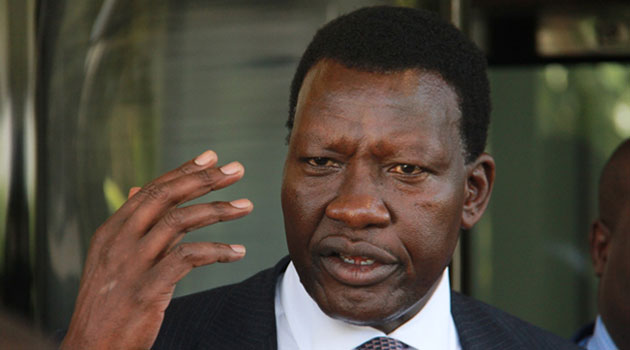Kenya clears road arrears with levy-backed financing
Kenya settles KSh 93b road arrears using a syndicated loan ahead of a levy-backed bond. USDKES (KES=X) stabilises as investor interest builds and frontier-market fund flows via ETF (NYSEARCA:FM) watch pricing of the 2026 road bond.

Kenya’s fiscal consolidation strategy entered a pivotal phase in November 2025 as the government settled KSh 93 billion (USD-equivalent) of overdue road-sector payments using proceeds from a KSh 104 billion syndicated commercial bank facility, easing liquidity stress across the transport construction ecosystem. The settlement clears almost all verified arrears owed to contractors under the Kenya National Highways Authority, Kenya Rural Roads Authority, and Kenya Urban Roads Authority, unlocking stalled road and bridge projects that had strained balance sheets across the construction supply chain for nearly two years. Immediate cash reimbursement stabilised working capital positions, enabling contractors to resume procurement, reactivate labour mobilisation, and restart subcontracting flows into cement, aggregates, and logistics.
The partial refinancing is structured as a bridge facility ahead of a planned KSh 175 billion road infrastructure bond to be issued in 2026. The bond will be secured against the Road Maintenance Levy Fund, a hypothecated revenue pool fed by fuel-levy inflows. By anchoring repayment to a predictable and ring-fenced cash stream, the government aims to broaden the investor base beyond banks and attract pension funds and insurance balance sheets seeking duration and predictable cash flow. The structure mirrors revenue-backed frameworks used in Latin American transport concessions, where asset-linked bonds reduced refinancing risk and improved debt transparency. Kenya’s decision to securitise levy flows signals a shift away from ad-hoc budget allocations toward a rules-based infrastructure-financing framework.
The macro impact is already visible. Lending to construction enterprises expanded 21.7% year-on-year, reaching KSh 159.6 billion, while domestic cement consumption rose 23.9%, indicating a revival in physical execution. GDP growth accelerated to 5.0% in Q2 2025, up from 4.6% in the prior quarter, with transport and construction contributing disproportionately to incremental output. The arrears clearance effectively injected liquidity equal to roughly 0.8% of GDP back into the private sector, reducing payment-chain stress, lowering non-performing loan risks, and improving tax remittance flows as contractors resumed invoicing activity.
Financial discipline remains the determining variable. Despite progress in the roads portfolio, total verified government arrears still stand at KSh 526 billion, reflecting structural fiscal rigidities and delayed reimbursements across health, utilities, and county transfers. The authorities intend to eliminate the multi-year arrears backlog through a stricter commitment-control system and adoption of Treasury-single-account sequencing to prevent re-accumulation. For the upcoming bond to price efficiently, investors will require evidence that arrears have shifted from an operating norm to an exception.
Credit-market psychology is improving, but not unconditional. Spreads on long-dated Kenyan infrastructure-linked paper narrowed modestly after the arrears settlement, while yields on shorter tenors stabilised as investors interpreted the move as evidence of improved cash-management discipline. The fuel-levy securitisation mechanism increases repayment transparency, but project execution and governance will remain key determinants of the road bond’s placement and coupon. Kenya’s external financing conditions are still shaped by global rate dynamics, and international investors are sensitive to the credibility of ring-fencing arrangements. The sovereign’s strategy to shift part of its funding programme into revenue-linked issuance aligns with best practice across emerging markets, where infrastructure cash flows increasingly anchor borrowing instead of broad budget guarantees.
The long-term payoff depends on timely disbursement, procurement discipline, and transparent monitoring of levy inflows. If execution efficiency improves and arrears do not re-accumulate, the programme can support a structural reduction in government payment risk, lower contractor working-capital costs, and reduce reliance on expensive short-term financing. Conversely, if arrears re-emerge or levy proceeds are diverted, the credibility premium that Kenya is attempting to build will erode, raising spreads and pushing infrastructure back onto the sovereign balance sheet.
The signal from the arrears clearance is clear: Kenya is transitioning from cash-rationing to structured, rule-based capital planning. The next proof point will be the pricing and subscription level of the 2026 road bond. For institutional investors, predictable repayment streams backed by levy inflows represent a material upgrade in credit visibility. If the framework holds, Kenya can reduce fiscal volatility, sustain infrastructure momentum, and restore confidence among domestic and foreign lenders—turning a liquidity crisis into a foundation for long-duration capital formation.






